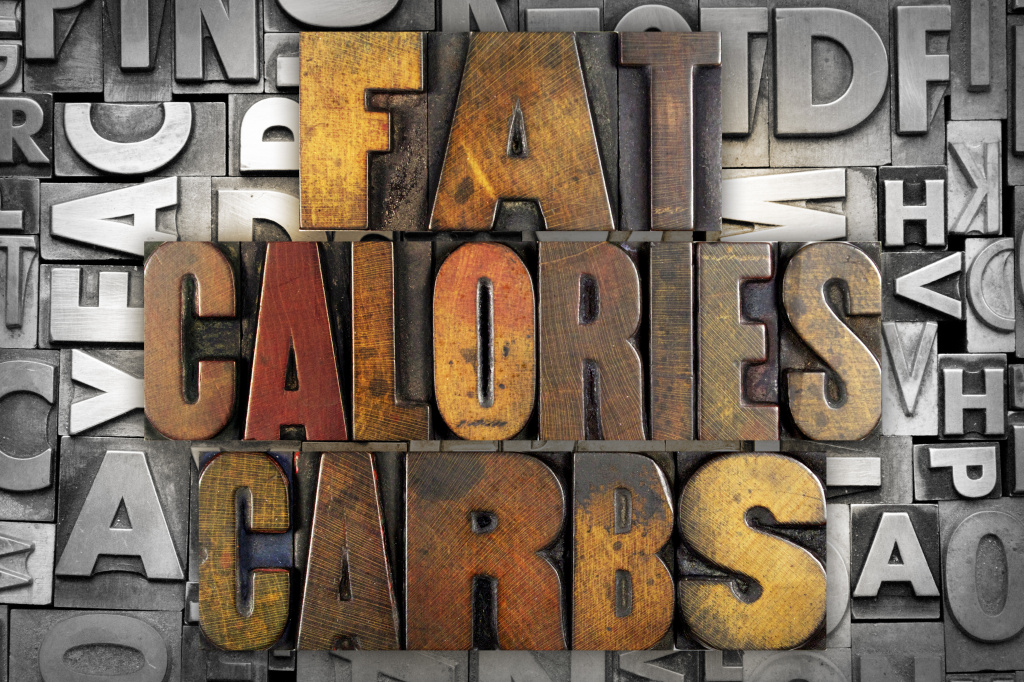Whether you know it or not, you eat macronutrients. If you have no clue what I’m talking about, no problem. I’m gonna tell you everything you need to know. If you have no clue what macros are, there’s a good chance you’re not counting them. Counting your macros is an effective tool to keep you on track for your health and fitness goals.
Counting macros is not a new thing. I’ve personally been doing it since I started training back in 2011. However, it has gained great popularity recently and many are jumping on board. Rightfully so. It’s a great way to be accountable for your overall health and fitness no matter the goal.

What are Macronutrients?
Macronutrients, AKA macromolecules, are nutrients that are needed in large quantities by the body. That’s how they get their name. Macro means large. The 3 critical macronutrients are protein, carbs, and fats. The importance of fiber is becoming ever-prominent. I could see a solid argument for it to be considered a macronutrient. I will touch on fiber as I have most of my clients keep track of it also.
Protein
These building blocks of muscle, as they are most commonly known, serve many functions in the body. Research is clear that high protein diets are very effective for weight management. A critical review by Halton et al found a significant amount of data that’s very convincing in favor of protein’s effects on increased thermogenesis and a reduced energy intake.
If you’re familiar with me and my philosophies, you know that I’m big on protein. It’s beneficial for all and a diet high in protein is much more satisfying than one that is low in protein. Of course, “high” and “low” are relative terms. There are no clear cut definitions; it is very much user dependent. What’s high for you may be low for me. The supply and demand business model can apply here. Some people create a much higher demand for protein than others through various means (i.e. weight training, running, etc.).
Protein is a critical element when in a caloric deficit. Without sufficient protein intake one could expect to lose a significant amount of lean tissue. This study compared the difference between a higher-protein (HP) intake as opposed to a lower-protein (LP) diet. They were looking for the effects it would have on body fat, lean tissue, fasting and postprandial glucose, and insulin concentrations in participants with type 2 diabetes.
It should be noted that both groups lost weight. They were in a caloric deficit but that’s not the whole story. They found that women lost significantly more total and abdominal fat on the HP diet. A decrease in LDL cholesterol was found in men and women. Lean muscle mass was lost on both diets. However, less lean tissue was lost with the HP diet. It was found to not be statistically significant but it should be noted that HP diets were slightly better than LP diets at sustaining lean tissue while in a caloric deficit. When considering dropping your calories, protein should be the last choice.
Carbohydrates
Carbohydrates, or carbs for short, are the body’s preferred source of energy. The brain is primarily fueled by glucose which can come in many forms. The most readily available is in the form of dietary carbs. Carbs are also very effective in sustaining high intensity training.
Unlike protein and fats, there are no essential carbohydrates (officially). You could argue about fiber but I’ll get into that in a second. The popularity of low carb diets dates back before our good buddy Dr. Atkins. However, he gets the majority of the credit. Low carb diets work pretty well in the correct context. The problem is that they are hard to sustain for most. It is unrealistic to have people think that they will never eat foods that love again such as pizza, cake, and other tom foolery.
However, there are many proven benefits of low carb or ketogenic diets. For those with very low activity levels who do not need carbs for great amounts of energy, these diets could reign supreme.
Carbs are one of the most controversial topics in the industry today and I’m afraid they will be for a long time. They are HIGHLY user dependent and it’s near impossible to recommend an amount without know several factors. This data has concluded that carbohydrate intake should coincide with how much performance will be impaired.
A major downfall to long-term carb restriction is the metabolic adaptations that can occur. With these adaptations, it is critical that carbs be slowly re-introduced in order to prevent a “rebound” affect associated with yo-yo dieting. I touch on these adaptations here.
Fat
Once thought of as the enemy in weight management tactics, fat is now more understood and known for it’s health benefits. Fats are crucial when it comes to several body functions such as hormone regulation, joint protection and cushion, eye and brain health, immune system support, and on and on.
There is even some evidence that supports a higher fat intake could help the body be more efficient at utilizing fat for energy. Please keep in mind that a “higher” fat intake is relative to the situation (i.e. one’s current metabolic state/diet).
Fiber
Fiber has no caloric value and is not considered a macronutrient. However, it is critical to a healthy digestive system. It helps to slow down digestion in order for the body to be as efficient as possible absorbing nutrients.
Other Benefits of Fiber:
Lowers Blood Pressure/ Serum Cholesterol Levels
Improved Glycemia & Insulin Sensitivity
Significantly Enhances Weight Loss
Probably due to it’s impact on satiety
Beneficial in many Gastrointestinal Disorders
(Anderson et al)
Why is Important to Track?

I suppose it isn’t important if you don’t have a goal in mind. Just do whatever and you’ll get somewhere. If you’re happy with that outcome, my hats off to you. However, my experience is that people have ambitions and things they want to accomplish. Sometimes they are just unwilling to pay the price. And that’s okay. It’s not for everybody; things that are worth doing are never easy.
“They’re the things that are done the least, but provide the most.” — Greg Plitt
Having a goal is great but you must have a plan of action that’s gonna take you there. You can’t go about it blindly, hoping to get there. Every action has to have a purpose. When every action has a purpose, every action will bring you closer to your end state goal.
Keeping track makes you a mindful eater. You’ll be successful forever if you find the correct numbers and stick to them! Knowing how many grams of protein, carbs, and fats you need to eat that day is a great road map to success. It gives your meals structure and something to be mindful of.
Not only will it give you a plan to follow, it will also give you something to look back on once you’ve hit a plateau. Everybody hits plateaus; it’s only a matter of when. But, if you know what you’ve been doing the past 6-8 weeks, you can manipulate the variables to break down the wall you’ve hit.
For example, you’ve successfully lost 1-1.5 lbs for 6 weeks but the last 2 weeks it has seemed to stall. You look back on your calories and macros and realize that you would like to get your protein intake a little higher. You can alter you protein and carbs or fats to give you the same overall calorie load with differing macro counts to see how that works for you.
Many people respond differently to different macro percentages. I, for one, respond really well to a lower carb, moderate fat, high protein intake. I do not suggest that for everybody however.
Bottom line: the more you know about your past, the more you’ll learn about how your body adapts and responds to various changes. It’s a learning process but it’s well worth it to know everything you can about your body.
How do you Track?
It’s never been more easier to track your calories and macros than it is now. Back in 2011, I used the old school pen and paper. That wasn’t completely necessary, even back then, because various apps and online tools where available. I just preferred to write it out. I felt like it made me more accountable.
There’s really no excuse with the abundance of apps and technology. Just about every food out there has a reasonable amount of data to give you the approximate macronutrients. Many restaurants make their menu items available to these macro trackers as well.
I still prefer to track mine out a little bit more manually. I use an excel document and insert formulas to calculate everything I want to know. If you are like me and prefer to do it a little more old school the following chart should help you out.
| Macronutrient | Calories/g | Example |
|---|---|---|
| Protein | 4 cal/g | 100g = 400 cal |
| Carbs | 4 cal/g | 150g = 600 cal |
| Fats | 9 cal/g | 50g = 450 cal |
Recommendations
Protein
High. Always keep protein high. What do I mean by high? I alway recommend at least 1g/lb of body weight. Most recommendations are based on lean body mass (LBM) or fat free mass. I find going off body weight goes a bit better. However, I am flexible with this and it’s far from my ‘end all, be all’ rule. It greatly depends on goal and where you are metabolically.
Carbs
This macro is probably the most user dependent. It’s near impossible to give a recommendation on it without knowing several factors such as activity level, specific goal, etc. There are many different theories out there when it comes to carbs like low carb, carb cycling, etc. Each are effective but must be used in the correct context.
Fats
Typically fats would fall somewhere in the range of 0.4 – 0.6g/ lb of body weight. Of course these also depend on the goal at hand. Low carb diets will generally create a higher fat intake than the above range, but it’s a pretty solid estimate. There are essential fatty acids (EFAs) so getting the correct type and amount of fat in your diet is critical to overall health and your specific fitness goal.
Fiber
For every 1,000 calories you eat, it is recommended to consume 14g of fiber (Anderson et al). You don’t want to over-do it with fiber but you definitely want sufficient amounts.
| Calories | Fiber |
|---|---|
| 1000 cal | 14g |
| 2000 cal | 28g |
| 2500 cal | 35g |
Disclaimer: It’s not recommended that you follow any of the examples listed above. They are general guidelines that I go by when providing nutritional guidance to clients. Calories and macronutrients should always be made as specific as possible for each individual.
Take Home
For all of those who are serious about their health and overall wellness, being mindful of what you are putting in your body is critical. For those on more of the extreme of the spectrum, such as bodybuilders and athletes, it becomes more of a critical element to getting the most out of your performance.
It’s the responsibility of every individual to take care of the body. It’s truly an incredible design and amazing to learn about. I think we are doing ourselves a great injustice to not be constantly learning and improving our bodies Physically, Mentally, & Spiritually on a daily basis.
Equip yourself with the tools you need to be successful so that you may fulfill your purpose on this earth.


